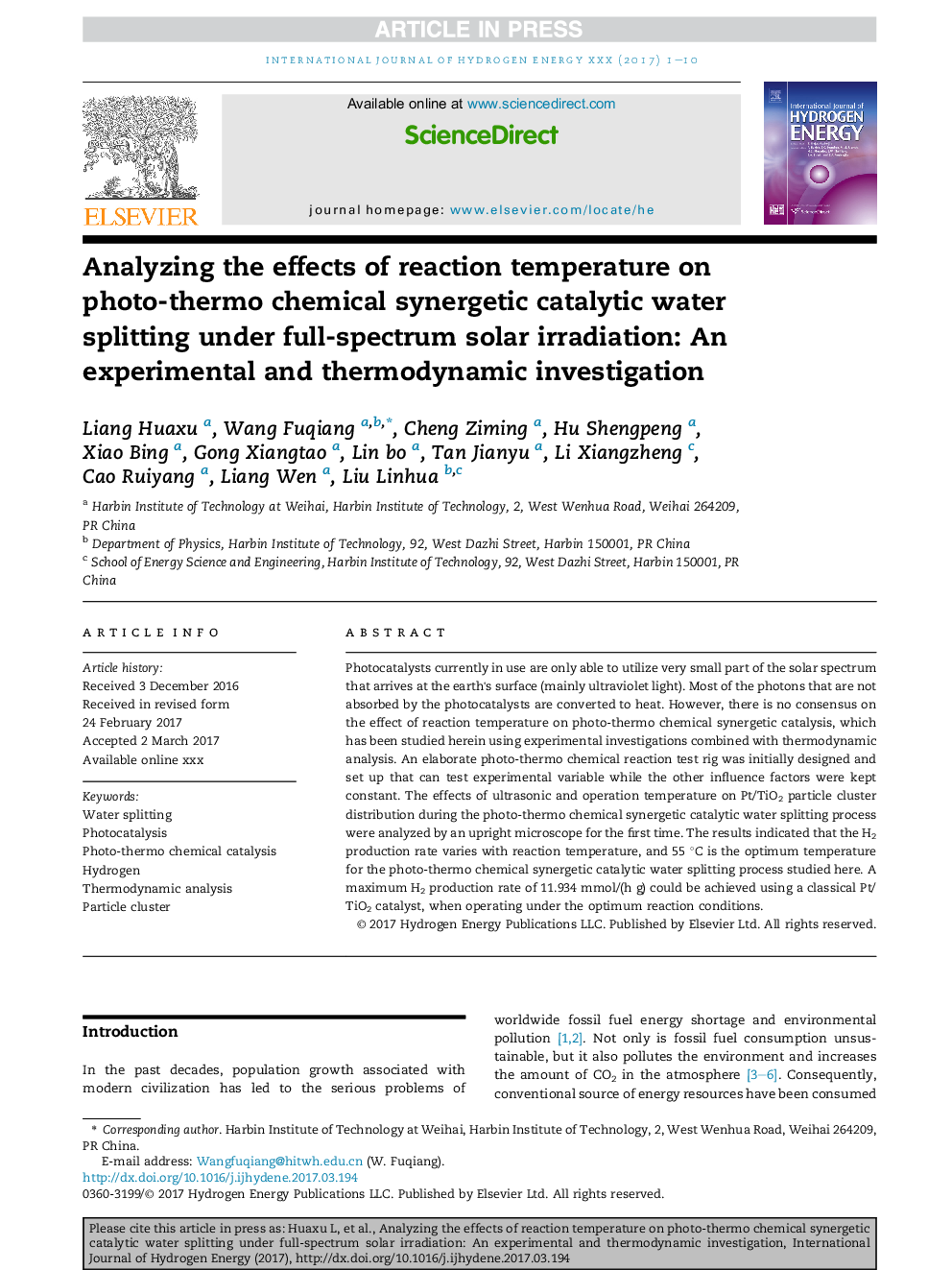| Article ID | Journal | Published Year | Pages | File Type |
|---|---|---|---|---|
| 5147739 | International Journal of Hydrogen Energy | 2017 | 10 Pages |
Abstract
Photocatalysts currently in use are only able to utilize very small part of the solar spectrum that arrives at the earth's surface (mainly ultraviolet light). Most of the photons that are not absorbed by the photocatalysts are converted to heat. However, there is no consensus on the effect of reaction temperature on photo-thermo chemical synergetic catalysis, which has been studied herein using experimental investigations combined with thermodynamic analysis. An elaborate photo-thermo chemical reaction test rig was initially designed and set up that can test experimental variable while the other influence factors were kept constant. The effects of ultrasonic and operation temperature on Pt/TiO2 particle cluster distribution during the photo-thermo chemical synergetic catalytic water splitting process were analyzed by an upright microscope for the first time. The results indicated that the H2 production rate varies with reaction temperature, and 55 °C is the optimum temperature for the photo-thermo chemical synergetic catalytic water splitting process studied here. A maximum H2 production rate of 11.934 mmol/(h g) could be achieved using a classical Pt/TiO2 catalyst, when operating under the optimum reaction conditions.
Related Topics
Physical Sciences and Engineering
Chemistry
Electrochemistry
Authors
Liang Huaxu, Wang Fuqiang, Cheng Ziming, Hu Shengpeng, Xiao Bing, Gong Xiangtao, Lin bo, Tan Jianyu, Li Xiangzheng, Cao Ruiyang, Liang Wen, Liu Linhua,
